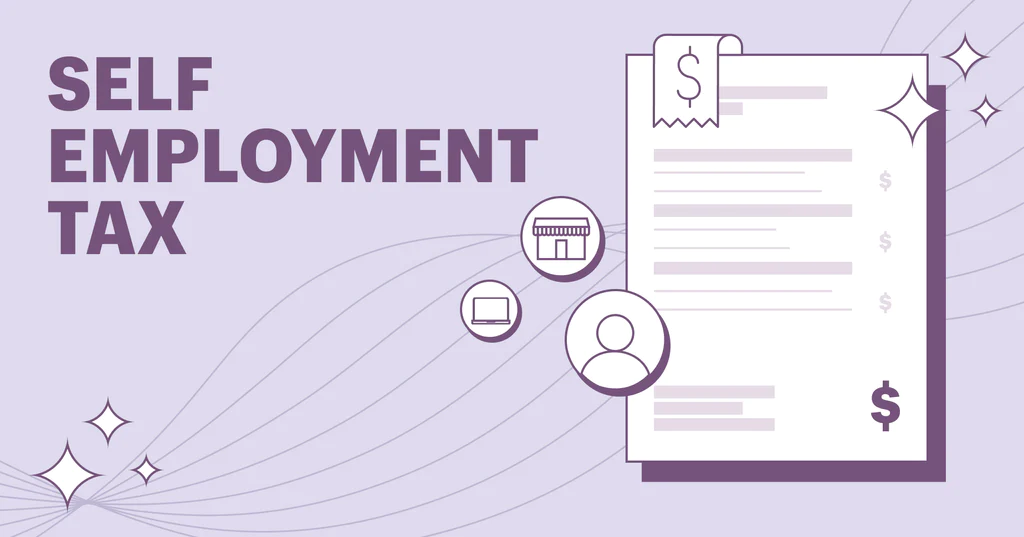Self-employment taxes have become an increasingly discussed topic in recent years. Tax rates for self-employed individuals are much higher than those for the standard employments. The increased tax burden can put a financial strain on self-employed individuals and their families. This article will discuss why self-employment taxes are higher than standard income taxes and what can be done to alleviate this disparity.
Background
Self-employed individuals are responsible for reporting their own income, paying any associated taxes and filing the appropriate tax forms. The Internal Revenue Service (IRS) defines self-employment as work that is done independently and not under the direction of an employer, such as running a business, freelance work, contracting, and consulting.
Generally speaking, self-employed individuals pay more taxes than those with standard income because they are responsible for covering their own Social Security and Medicare fees, as well as any additional taxes needed. This classified them as “double-taxed” – paying taxes twice – because employers usually pick up half of these fees with standard incomes. To make up for the higher taxation rate, the IRS offers self-employed individuals tax deductions and credits that they can use to lower their taxes.
Self-Employment Taxes Versus Standard Income Taxes
Self-employment taxes are much higher than those for the standard employments. This is because the self-employed individual is responsible for paying for their share of the Social Security and Medicare taxes, as well as any additional taxes needed.
The first difference is that the Social Security tax rate is higher for the self-employed. Self-employed individuals are responsible for Social Security taxes of 12.4 percent up to the specified maximum base income of $137,700. The employer is in charge of the other half.
The amount of Medicare taxes self-employed individuals pay also doubles compared to those with standard employment status. The self-employed are responsible for paying a 2.9 percent tax rate on their net earnings per quarter, or up to the established income cap of $200,000 for single filers or $250,000 for married couples filing jointly.
Aside from Social Security and Medicare taxes, the self-employed must also pay other self-employment taxes such as business income tax, estimated taxes, payroll taxes, and health insurance premiums. The IRS requires that self-employed individuals pay estimated taxes on a quarterly basis and must pay business income tax. Business income tax is also known as “unincorporated business tax” and “self-employment tax.” Self-employed individuals may also be subject to payroll taxes depending on the type of business they operate.
Finally, the self-employed are responsible for their own health insurance premiums. This can be expensive and out of reach for many self-employed individuals. Health insurance premiums are determined by the type of plan offered and the state the business operates in.
Differences in Tax Deductions and Credits
One of the differences between standard employment and self-employment is that the latter group can take advantage of certain deductions and credits that can help alleviate the cost of taxes. Self-employed individuals can take deductions for business expenses. This includes things like business-related travel, meals, and entertainment.
In addition, self-employed individuals may be eligible for tax credits if they are enrolled in a qualifying health insurance plan. The tax credit reduces a self-employed individual’s net income and can help reduce the amount of taxes they must pay.
The self-employed may also be eligible for other tax incentives, such as deferral of Social Security benefits, which allows them to receive the benefits of Social Security at a later date. Deferring Social Security benefits can help reduce taxes and extend benefits to retirement age.
Finally, self-employed individuals may also be eligible for deductions on self-employed health insurance premiums. This deduction can help to reduce the cost of health insurance premiums.
Offsetting Tax Obligations
Self-employed individuals may be able to offset some of their tax obligations by contributing to retirement accounts and deferring income. Contributing to retirement accounts like an Individual Retirement Account (IRA) can help self-employed individuals save for retirement and reduce their tax burden.
In addition, self-employed individuals can defer income and pay taxes in later years. This includes making estimated tax payments and deferring income until later dates. Making estimated payments helps to spread out the cost of taxes and can reduce the amount of taxes owed.
What Can be Done to Reduce Self-Employment Taxes?
To reduce the burden of self-employment taxes, there are several strategies that self-employed individuals can consider. These include: (1) taking advantage of deductions, credits, and exclusions, (2) establish a retirement plan, (3) pay estimated taxes throughout the year, (4) consider forming a limited liability company (LLC), and (5) consider forming an S corporation.
Final Thought
Self-employment taxes are often higher than standard income taxes, which can be overwhelming and burdensome for the self-employed. While the burden of taxes may seem steep, there are ways that self-employed individuals can reduce their tax burden and offset the cost of taxes. By taking advantage of deductions and credits, and making estimated payments, the self-employed can reduce their taxes and even extend their benefits to later years. As the job market continues to evolve, it is important to recognize the disparities in taxation and build policies and incentives that help to reduce the tax burden of self-employed individuals.

